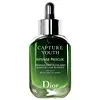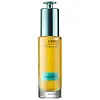What's inside
What's inside
 Key Ingredients
Key Ingredients

 Benefits
Benefits

 Concerns
Concerns

 Ingredients Side-by-side
Ingredients Side-by-side

Water
Skin ConditioningGlycerin
HumectantButylene Glycol
HumectantDimethicone
EmollientPropanediol
SolventMethyl Gluceth-20
HumectantPhenoxyethanol
PreservativePPG-26-Buteth-26
Skin ConditioningArgania Spinosa Kernel Oil
EmollientPEG-40 Hydrogenated Castor Oil
EmulsifyingParfum
MaskingAcrylates/C10-30 Alkyl Acrylate Crosspolymer
Emulsion StabilisingDimethicone/Vinyl Dimethicone Crosspolymer
Skin ConditioningPentylene Glycol
Skin ConditioningSodium Hydroxide
BufferingAmodimethicone
Aphanothece Sacrum Polysaccharide
AbsorbentCarbomer
Emulsion StabilisingCentella Asiatica Leaf Extract
Skin ConditioningDisodium EDTA
Adenosine
Skin ConditioningCalophyllum Inophyllum Seed Oil
AntimicrobialSodium Tocopheryl Phosphate
AntioxidantIris Florentina Root Extract
MaskingBHT
AntioxidantCI 19140
Cosmetic ColorantCI 14700
Cosmetic ColorantTocopherol
AntioxidantWater, Glycerin, Butylene Glycol, Dimethicone, Propanediol, Methyl Gluceth-20, Phenoxyethanol, PPG-26-Buteth-26, Argania Spinosa Kernel Oil, PEG-40 Hydrogenated Castor Oil, Parfum, Acrylates/C10-30 Alkyl Acrylate Crosspolymer, Dimethicone/Vinyl Dimethicone Crosspolymer, Pentylene Glycol, Sodium Hydroxide, Amodimethicone, Aphanothece Sacrum Polysaccharide, Carbomer, Centella Asiatica Leaf Extract, Disodium EDTA, Adenosine, Calophyllum Inophyllum Seed Oil, Sodium Tocopheryl Phosphate, Iris Florentina Root Extract, BHT, CI 19140, CI 14700, Tocopherol
Collagen
MoisturisingWater
Skin ConditioningPropanediol
SolventIsononyl Isononanoate
EmollientButylene Glycol
HumectantGlycerin
HumectantBetaine
HumectantPentylene Glycol
Skin ConditioningDextrin Palmitate
EmulsifyingCollagen Amino Acids
MoisturisingParachlorella Beijerinckii Exopolysaccharides
Skin ProtectingChlorella Protothecoides Oil
EmollientHelichrysum Stoechas Flower Extract
PerfumingCylindrotheca Fusiformis Extract
AntioxidantNiacinamide
SmoothingTocopherol
AntioxidantPalmitoyl Tripeptide-1
Skin ConditioningPalmitoyl Tetrapeptide-7
Skin ConditioningAdenosine
Skin ConditioningHelianthus Annuus Seed Oil
EmollientLeuconostoc/Radish Root Ferment Filtrate
AntimicrobialCaprylic/Capric Triglyceride
MaskingPalmitic Acid
EmollientDisodium EDTA
Carbomer
Emulsion StabilisingSodium Lactate
BufferingAmodimethicone
Homosalate
Skin ConditioningPolysorbate 20
EmulsifyingButyl Methoxydibenzoylmethane
UV Absorber1,2-Hexanediol
Skin ConditioningCaprylyl Glycol
EmollientOctocrylene
UV AbsorberSodium Hydroxide
BufferingPhenoxyethanol
PreservativeParfum
MaskingLimonene
PerfumingCI 40800
Cosmetic ColorantCollagen, Water, Propanediol, Isononyl Isononanoate, Butylene Glycol, Glycerin, Betaine, Pentylene Glycol, Dextrin Palmitate, Collagen Amino Acids, Parachlorella Beijerinckii Exopolysaccharides, Chlorella Protothecoides Oil, Helichrysum Stoechas Flower Extract, Cylindrotheca Fusiformis Extract, Niacinamide, Tocopherol, Palmitoyl Tripeptide-1, Palmitoyl Tetrapeptide-7, Adenosine, Helianthus Annuus Seed Oil, Leuconostoc/Radish Root Ferment Filtrate, Caprylic/Capric Triglyceride, Palmitic Acid, Disodium EDTA, Carbomer, Sodium Lactate, Amodimethicone, Homosalate, Polysorbate 20, Butyl Methoxydibenzoylmethane, 1,2-Hexanediol, Caprylyl Glycol, Octocrylene, Sodium Hydroxide, Phenoxyethanol, Parfum, Limonene, CI 40800
Ingredients Explained
These ingredients are found in both products.
Ingredients higher up in an ingredient list are typically present in a larger amount.
Adenosine is in every living organism. It is one of four components in nucleic acids that helps store our DNA.
Adenosine has many benefits when used. These benefits include hydrating the skin, smoothing skin, and reducing wrinkles. Once applied, adenosine increases collagen production. It also helps with improving firmness and tissue repair.
Studies have found adenosine may also help with wound healing.
In skincare products, Adenosine is usually derived from yeast.
Learn more about AdenosineThis water-soluble silicone is used for its hydrating and softening properties. It is used to add a silky feel to skincare products and has great benefits for haircare.
In haircare, this ingredient:
- Adds shine
- Protects color
- Offers thermal protection
- Boosts hair strength
- Does not build up as easily
Butylene Glycol (or BG) is used within cosmetic products for a few different reasons:
Overall, Butylene Glycol is a safe and well-rounded ingredient that works well with other ingredients.
Though this ingredient works well with most skin types, some people with sensitive skin may experience a reaction such as allergic rashes, closed comedones, or itchiness.
Learn more about Butylene GlycolCarbomer is a polymer of acrylic acid. Its main role is to create a gel consistency.
A high amount of carbomer can cause pilling or balling up of products. Don't worry, most products contain 1% or less of carbomer.
Disodium EDTA plays a role in making products more stable by aiding other preservatives.
It is a chelating agent, meaning it neutralizes metal ions that may be found in a product.
Disodium EDTA is a salt of edetic acid and is found to be safe in cosmetic ingredients.
Learn more about Disodium EDTAGlycerin is already naturally found in your skin. It helps moisturize and protect your skin.
A study from 2016 found glycerin to be more effective as a humectant than AHAs and hyaluronic acid.
As a humectant, it helps the skin stay hydrated by pulling moisture to your skin. The low molecular weight of glycerin allows it to pull moisture into the deeper layers of your skin.
Hydrated skin improves your skin barrier; Your skin barrier helps protect against irritants and bacteria.
Glycerin has also been found to have antimicrobial and antiviral properties. Due to these properties, glycerin is often used in wound and burn treatments.
In cosmetics, glycerin is usually derived from plants such as soybean or palm. However, it can also be sourced from animals, such as tallow or animal fat.
This ingredient is organic, colorless, odorless, and non-toxic.
Glycerin is the name for this ingredient in American English. British English uses Glycerol/Glycerine.
Learn more about GlycerinParfum is a catch-all term for an ingredient or more that is used to give a scent to products.
Also called "fragrance", this ingredient can be a blend of hundreds of chemicals or plant oils. This means every product with "fragrance" or "parfum" in the ingredients list is a different mixture.
For instance, Habanolide is a proprietary trade name for a specific aroma chemical. When used as a fragrance ingredient in cosmetics, most aroma chemicals fall under the broad labeling category of “FRAGRANCE” or “PARFUM” according to EU and US regulations.
The term 'parfum' or 'fragrance' is not regulated in many countries. In many cases, it is up to the brand to define this term.
For instance, many brands choose to label themselves as "fragrance-free" because they are not using synthetic fragrances. However, their products may still contain ingredients such as essential oils that are considered a fragrance by INCI standards.
One example is Calendula flower extract. Calendula is an essential oil that still imparts a scent or 'fragrance'.
Depending on the blend, the ingredients in the mixture can cause allergies and sensitivities on the skin. Some ingredients that are known EU allergens include linalool and citronellol.
Parfum can also be used to mask or cover an unpleasant scent.
The bottom line is: not all fragrances/parfum/ingredients are created equally. If you are worried about fragrances, we recommend taking a closer look at an ingredient. And of course, we always recommend speaking with a professional.
Learn more about ParfumPentylene glycol is typically used within a product to thicken it. It also adds a smooth, soft, and moisturizing feel to the product. It is naturally found in plants such as sugar beets.
The hydrophilic trait of Pentylene Glycol makes it a humectant. As a humectant, Pentylene Glycol helps draw moisture from the air to your skin. This can help keep your skin hydrated.
This property also makes Pentylene Glycol a great texture enhancer. It can also help thicken or stabilize a product.
Pentylene Glycol also acts as a mild preservative and helps to keep a product microbe-free.
Some people may experience mild eye and skin irritation from Pentylene Glycol. We always recommend speaking with a professional about using this ingredient in your routine.
Pentylene Glycol has a low molecular weight and is part of the 1,2-glycol family.
Learn more about Pentylene GlycolPhenoxyethanol is a preservative that has germicide, antimicrobial, and aromatic properties. Studies show that phenoxyethanol can prevent microbial growth. By itself, it has a scent that is similar to that of a rose.
It's often used in formulations along with Caprylyl Glycol to preserve the shelf life of products.
Propanediol is an all-star ingredient. It softens, hydrates, and smooths the skin.
It’s often used to:
Propanediol is not likely to cause sensitivity and considered safe to use. It is derived from corn or petroleum with a clear color and no scent.
Learn more about PropanediolSodium Hydroxide is also known as lye or caustic soda. It is used to adjust the pH of products; many ingredients require a specific pH to be effective.
In small amounts, sodium hydroxide is considered safe to use. However, large amounts may cause chemical burns due to its high alkaline.
Your skin has a natural pH and acid mantle. This acid mantle helps prevent harmful bacteria from breaking through. The acid mantle also helps keep your skin hydrated.
"Alkaline" refers to a high pH level. A low pH level would be considered acidic.
Learn more about Sodium HydroxideTocopherol (also known as Vitamin E) is a common antioxidant used to help protect the skin from free-radicals and strengthen the skin barrier. It's also fat soluble - this means our skin is great at absorbing it.
Vitamin E also helps keep your natural skin lipids healthy. Your lipid skin barrier naturally consists of lipids, ceramides, and fatty acids. Vitamin E offers extra protection for your skin’s lipid barrier, keeping your skin healthy and nourished.
Another benefit is a bit of UV protection. Vitamin E helps reduce the damage caused by UVB rays. (It should not replace your sunscreen). Combining it with Vitamin C can decrease sunburned cells and hyperpigmentation after UV exposure.
You might have noticed Vitamin E + C often paired together. This is because it is great at stabilizing Vitamin C. Using the two together helps increase the effectiveness of both ingredients.
There are often claims that Vitamin E can reduce/prevent scarring, but these claims haven't been confirmed by scientific research.
Learn more about TocopherolWater. It's the most common cosmetic ingredient of all. You'll usually see it at the top of ingredient lists, meaning that it makes up the largest part of the product.
So why is it so popular? Water most often acts as a solvent - this means that it helps dissolve other ingredients into the formulation.
You'll also recognize water as that liquid we all need to stay alive. If you see this, drink a glass of water. Stay hydrated!
Learn more about Water